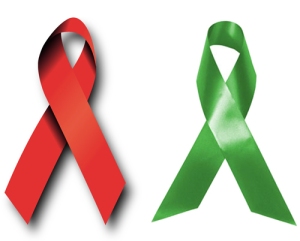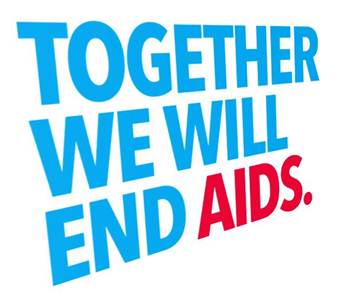
It’s only a week until the general election on Thursday, 7th May. It looks like being the closest election in living memory, meaning the way you vote could be the most important political decision of your life.
With lots of talk about care, health and the NHS, it’s difficult to see where our political parties position themselves in terms of support for people living with HIV. This isn’t surprising as focus tends to be put on financing and restructuring health and social care, rather than on individual health conditions.
Do you know who your voting for yet or are you still not sure? – If you’re not, you are not alone! Polls show that more people than ever before are still trying to decide which of the parties to support.
Part of the problem is information overload. We’re drowning in fact and figures about politics, claims and counter-claims from the politicians and their spin-doctors. How is anyone supposed to cut through it all to the things that really matter to them?
You may be asking, as a HIV positive individual, what party will ensure my care, and what HIV (or anti-HIV) policies can I expect from our government and now is the time to decide if you prefer to vote for the status quo, or vote for change.
A HIV diagnoses is only part of the issue, what to matters is access to GP’s and ensuring our NHS is adequately staffed to support patients in need of medical assistance. While there’s no direct messages from our political leaders about HIV, (other than sensationalised media reports) we can see their pledges for health & social care which directly affects not just people living with HIV, but for many other people who use public services.
The following information is provided to help give clarity across the parties’ pledges. We are obviously not advising you who to vote for but we hope this information is useful if you are yet to make up your mind.
What is the main message?
 A strong NHS built on a strong economy, prioritising frontline care
A strong NHS built on a strong economy, prioritising frontline care
 Will rescue the NHS, invest in its future and join up services from
Will rescue the NHS, invest in its future and join up services from
home to hospital

Quality health for all, with a guarantee of equal care for mental health
 Fund frontline services and encourage a common-sense approach with less political interference
Fund frontline services and encourage a common-sense approach with less political interference
 A publicly funded, publicly provided NHS and an end to the privatisation of services
A publicly funded, publicly provided NHS and an end to the privatisation of services
How much money have they pledged for the NHS?
 A minimum real-terms increase of £8 billion a year by 2020
A minimum real-terms increase of £8 billion a year by 2020
 An annual £2.5 billion ‘time to care’ fund, paid for by a mansion tax, a levy on tobacco firms and by tackling tax avoidance
An annual £2.5 billion ‘time to care’ fund, paid for by a mansion tax, a levy on tobacco firms and by tackling tax avoidance
 Funding to be £8 billion a year higher by 2020
Funding to be £8 billion a year higher by 2020
 Increase frontline NHS spending by £3 billion a year by 2020
Increase frontline NHS spending by £3 billion a year by 2020
 An immediate increase of £12 billion a year, rising to £20 billion a year by 2020, raising some of the extra revenue from higher taxes on alcohol and tobacco
An immediate increase of £12 billion a year, rising to £20 billion a year by 2020, raising some of the extra revenue from higher taxes on alcohol and tobacco
What about social care?
 No commitment to increase social care funding. A guarantee that no one will have to sell their home to fund residential social care.
No commitment to increase social care funding. A guarantee that no one will have to sell their home to fund residential social care.
 No commitment to increase social care funding. Year-of-care budgets to incentivise better care at home, an end to 15-minute home care visits and a ban on zero-hours contracts for care workers.
No commitment to increase social care funding. Year-of-care budgets to incentivise better care at home, an end to 15-minute home care visits and a ban on zero-hours contracts for care workers.
 No commitment to increase social care funding. Reduce pressure on hospitals by investing £500 million a year in services close to people’s homes.
No commitment to increase social care funding. Reduce pressure on hospitals by investing £500 million a year in services close to people’s homes.
 Increase social care funding by £1.2 billion a year by 2020
Increase social care funding by £1.2 billion a year by 2020
 Provide free social care for older people, spending an additional £9 billion a year by 2020
Provide free social care for older people, spending an additional £9 billion a year by 2020
Have they committed to delivering integrated care?
 Yes – building on the Better Care Fund and proposals to pool £6 billion of health and social care funding in Greater Manchester
Yes – building on the Better Care Fund and proposals to pool £6 billion of health and social care funding in Greater Manchester
 Yes – physical health, mental health and social care services to be integrated to provide ‘whole-person care’, with a stronger role for health and wellbeing boards
Yes – physical health, mental health and social care services to be integrated to provide ‘whole-person care’, with a stronger role for health and wellbeing boards
 Yes – all health and social care budgets to be pooled by 2018, a stronger role for health and wellbeing boards and responsibility for social care to be transferred to the Department of Health
Yes – all health and social care budgets to be pooled by 2018, a stronger role for health and wellbeing boards and responsibility for social care to be transferred to the Department of Health
 Yes – fully integrate health and social care funding and responsibilities, under the control of the NHS
Yes – fully integrate health and social care funding and responsibilities, under the control of the NHS
 Yes – social care to be provided free at the point of use in line with the recommendations of the Commission on the Future of Health and Social Care in England
Yes – social care to be provided free at the point of use in line with the recommendations of the Commission on the Future of Health and Social Care in England
 Yes – senior Conservatives have publicly backed it, and their funding commitments are closely tied to it
Yes – senior Conservatives have publicly backed it, and their funding commitments are closely tied to it
 In principle – Andy Burnham has stated his support but made clear Labour would make ‘fundamental changes’ that would alter the assumptions it is based on.
In principle – Andy Burnham has stated his support but made clear Labour would make ‘fundamental changes’ that would alter the assumptions it is based on.
 Yes – senior Liberal Democrats have made their support clear, and they were the first party to commit to the £8 billion funding increase it calls for
Yes – senior Liberal Democrats have made their support clear, and they were the first party to commit to the £8 billion funding increase it calls for
 No mention of it
No mention of it
 No mention of it
No mention of it
What are their plans to access to services?
 All patients to have access to GPs and hospital care seven days a week by 2020. Guaranteed same-day appointment with a GP for everyone over 75.
All patients to have access to GPs and hospital care seven days a week by 2020. Guaranteed same-day appointment with a GP for everyone over 75.
 Guaranteed GP appointments within 48 hours, or on the same day for those who need it. A maximum one-week wait for cancer tests and results by 2020
Guaranteed GP appointments within 48 hours, or on the same day for those who need it. A maximum one-week wait for cancer tests and results by 2020
 Easier access to GPs, expanding evening and weekend opening, and
Easier access to GPs, expanding evening and weekend opening, and
encouraging phone and Skype appointments
 Initiate a pilot programme to put GPs on duty in A&E departments seven days a week. Fund 8,000 new GP posts, with 1,000 of these designated to work on duty in A&E departments if the pilot programme is successful
Initiate a pilot programme to put GPs on duty in A&E departments seven days a week. Fund 8,000 new GP posts, with 1,000 of these designated to work on duty in A&E departments if the pilot programme is successful
 Provide local community health centres offering a range of services including out-of-hours care, to sit alongside GP surgeries
Provide local community health centres offering a range of services including out-of-hours care, to sit alongside GP surgeries
Have they committed to more staff?
 Yes – 5,000 more GPs to be trained by 2020
Yes – 5,000 more GPs to be trained by 2020
 Yes – the ‘time to care’ fund would pay for 20,000 nurses, 8,000 GPs, 5,000 care workers and 3,000 midwives
Yes – the ‘time to care’ fund would pay for 20,000 nurses, 8,000 GPs, 5,000 care workers and 3,000 midwives
 No specific pledge
No specific pledge
 Yes – an extra 20,000 nurses, 8,000 GPs and 3,000 midwives
Yes – an extra 20,000 nurses, 8,000 GPs and 3,000 midwives
 Yes – 400,000 jobs to be created across health and social care
Yes – 400,000 jobs to be created across health and social care
What pledges have the made about mental health?
 Ensure that psychological therapists are available in every part of the country. Ensure that women have access to mental health support during and after pregnancy
Ensure that psychological therapists are available in every part of the country. Ensure that women have access to mental health support during and after pregnancy
 Increase the proportion of the mental health budget spent on children A new right to psychological therapy in the NHS Constitution
Increase the proportion of the mental health budget spent on children A new right to psychological therapy in the NHS Constitution
 An extra £500 million a year for mental health services to improve access and reduce waiting times A raft of proposals to improve mental health services, in particular for children, pregnant women and new mothers.
An extra £500 million a year for mental health services to improve access and reduce waiting times A raft of proposals to improve mental health services, in particular for children, pregnant women and new mothers.
 Increase mental health funding by £170 million a year
Increase mental health funding by £170 million a year
End the postcode lottery for psychiatric liaison services in acute hospitals and A&E departments
 Ensure that spending on mental health rises and that everyone who needs a mental health bed can access one in their local NHS, or within a reasonable distance of their home if specialist care is required. Eliminate the use of police cells as ‘places of safety’ for children by 2016, and for adults, other than in exceptional circumstances, by the end of the
Ensure that spending on mental health rises and that everyone who needs a mental health bed can access one in their local NHS, or within a reasonable distance of their home if specialist care is required. Eliminate the use of police cells as ‘places of safety’ for children by 2016, and for adults, other than in exceptional circumstances, by the end of the
next parliament
What are they saying about public health?
 Review how best to support people with conditions such as obesity or drug or alcohol addictions to remain in or return to work
Review how best to support people with conditions such as obesity or drug or alcohol addictions to remain in or return to work
 Set maximum limits on levels of fat, salt and sugar in food marketed to children. Set a new national ambition to improve the uptake of physical activity and take targeted action on cheap, high-alcohol drinks.
Set maximum limits on levels of fat, salt and sugar in food marketed to children. Set a new national ambition to improve the uptake of physical activity and take targeted action on cheap, high-alcohol drinks.
 Restrict the marketing of junk food to children. Introduce a tax levy on tobacco companies to contribute to the costs of smoking cessation services and implement minimum unit pricing for alcohol
Restrict the marketing of junk food to children. Introduce a tax levy on tobacco companies to contribute to the costs of smoking cessation services and implement minimum unit pricing for alcohol
 Oppose minimum pricing of alcohol and reverse plain packaging legislation for tobacco products.
Oppose minimum pricing of alcohol and reverse plain packaging legislation for tobacco products.
 Introduce a minimum price of 50p per unit for alcoholic drinks
Introduce a minimum price of 50p per unit for alcoholic drinks
Extend VAT to less healthy foods, including sugar, spending the money raised on subsidising around one-third of the cost of fresh fruit and vegetables.
Would they repeal the Health and Social Care act?
 No.
No.

A bill in their first Queen’s Speech to repeal the Act – this would roll back competition, make the NHS the preferred provider of services and restore the Health Secretary’s responsibility to provide a comprehensive health service
 No, but committed to repealing any parts of the Act that make NHS services ‘vulnerable to forced privatisation’ and ending the role of the Competition and Markets Authority in health
No, but committed to repealing any parts of the Act that make NHS services ‘vulnerable to forced privatisation’ and ending the role of the Competition and Markets Authority in health
 No
No
 Yes – repeal the Act by introducing an NHS Reinstatement Bill to abolish competition and the commissioner–provider split and restore the Health Secretary’s responsibility to provide a comprehensive health service.
Yes – repeal the Act by introducing an NHS Reinstatement Bill to abolish competition and the commissioner–provider split and restore the Health Secretary’s responsibility to provide a comprehensive health service.
Election Manifestos
You can find all the information above and more policies within the party manifesto’s. Click on the icons below to visit the party’s manifesto.
 Conservative
Conservative
 Labour
Labour
 Liberal Democrats
Liberal Democrats
 UKIP
UKIP
 Green
Green
STAY UPDATED
























